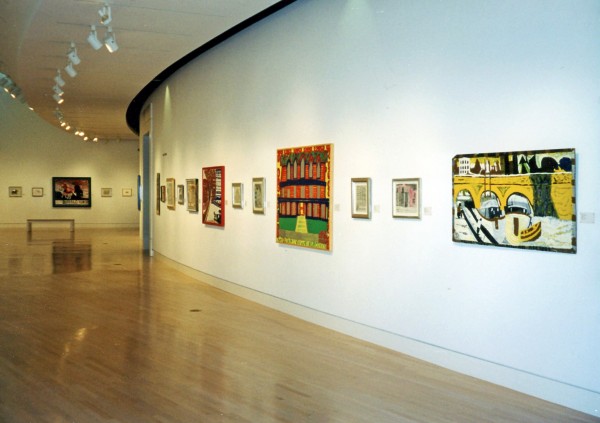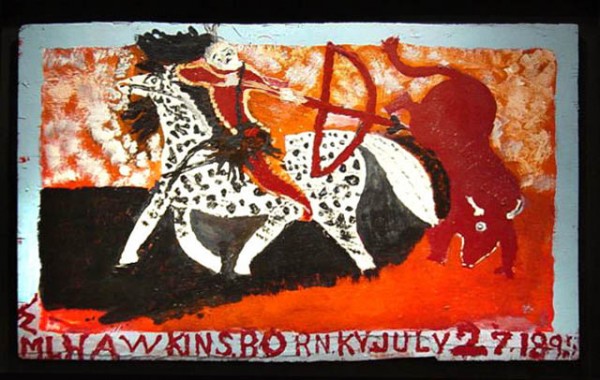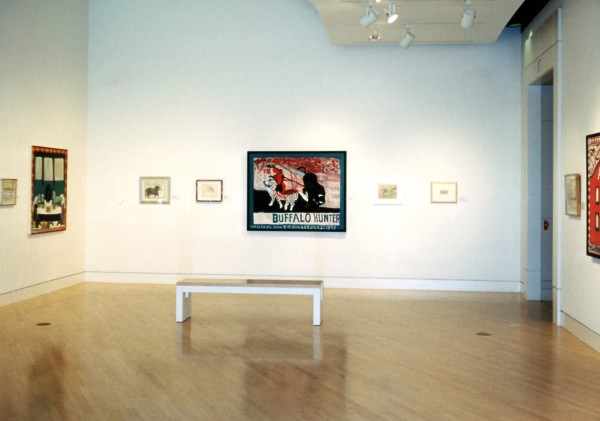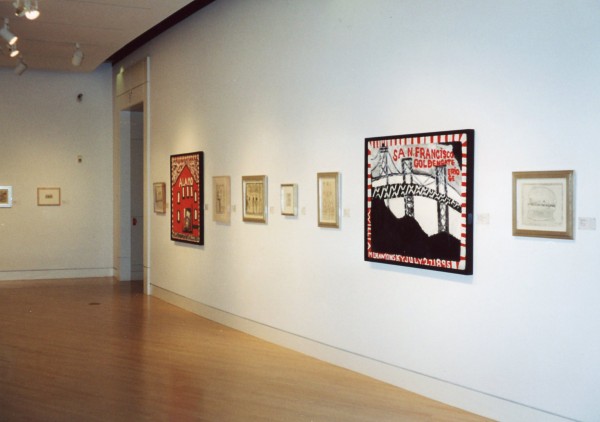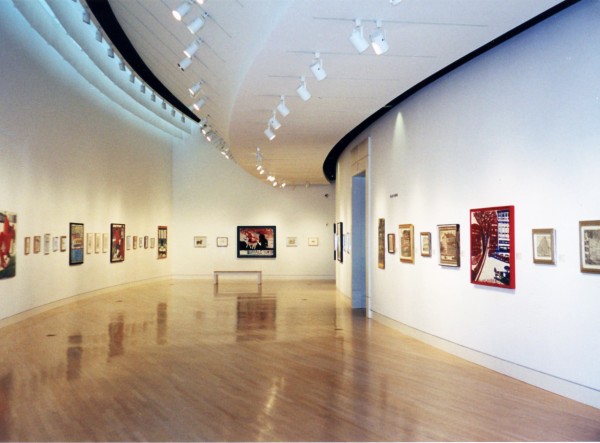William Hawkins: The Drawings in Context
Jan 13-Feb 25, 2001 William Hawkins was born in Kentucky on July 27, 1895, though he spent much of his adult life in and around Columbus, Ohio, where he moved in 1916 to avoid a shotgun wedding. One of the most highly regarded African American self taught artists of the twentieth century, Hawkins worked tirelessly at numerous jobs – often simultaneously – ranging from breaking horses and running numbers to industrial steel casting and truck driving. Hawkins said that he began painting in the 1930s, though he only dedicated himself exclusively to art around 1979, when he was discovered by artist Lee Garrett, leading to national attention and what collectors generally describe as his mature period.Tending to paint with a single brush and semigloss enamels on large plywood and Masonite surfaces, he often worked from magazine images or his own black-and-white photographs of buildings and animals, boldly articulating his unique, expressionistic interpretations of architectural forms, religious subjects, and nature studies in bright color and broad, patterned brushstrokes. By the time of his death in 1990, Hawkins had amassed a body of work comprising approximately 500 paintings and pencil drawings (not counting his lost early pieces). His highly personal visions of architecture and pop cultural themes are generally rendered in a restrained palette, sometimes including collaged found objects or images to designate depth and dimension in lieu of conventional perspective or detail.


